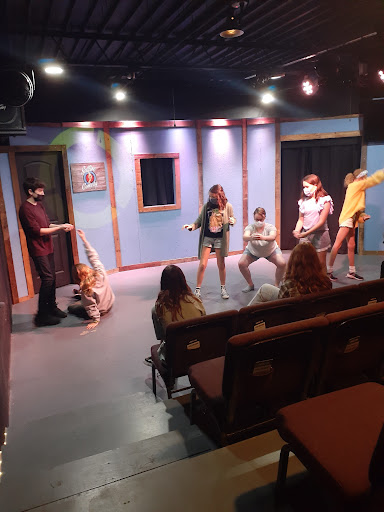For the first science unit, our high school cohort is learning about psychology, and how our brains develop, grow, and change as we get older. One of the best parts of an individualized curriculum is that we get to choose our goals and focus, rather than “teach to the test”. With our psychology unit, we are focusing on understanding the biological and sociocultural impacts on brain development, so that we can better understand ourselves and each other. Instead of memorizing names, dates, and published works, we get to focus on a conceptual understanding of psychology, and make connections to other subjects and everyday life.
We started with neurons: the information messengers between brain and body. We looked at how neural pathways are formed, and how chemical messages are sent from one section of the brain to another. The students made amazing connections between the way a neural network in the brain looks similar to root structures and river networks, and we had a great contemplative moment thinking about how nature’s structures repeat themselves.
Once we understood how neural pathways work, we were able to make strong connections to the book Atomic Habits by James Clear, which we started reading at the beginning of the year. What started as a “just another” self-help book study quickly became a series of lessons in applying psychological concepts to real life. Habits are clearly defined neural pathways — actions that have become so automatic that our brains are expending the least amount of energy needed to make them happen. Once we understood that a habit creates a “rut” in our brains, it became a little bit easier to begin the journey to break old “bad” habits and create new “healthy” ones.
Enter Creativity.

Our high school cohort has just finished their 4th improv class as a part of a six-class series at a local comedy theater, Spitfire Comedy House. Another plus of an individualized curriculum is the ways in which we can incorporate multimodal projects, experiential learning, field trips, and one-on-one sessions with experts to apply concepts we learn in the classroom. Understanding how the neural pathways in the brain can make certain actions seemingly automatic was step one; step two was taking action to change and enhance the neural networks in our own brains. By participating in improvisational exercises, we are forcing our brains to create new connections between ideas, and therefore stimulate new neural pathways. In our photography collage project, Deborah Molise is teaching us how to deconstruct a Polaroid to create a new image. This act of deconstruction and reconstruction allows us to see the same information in a variety of ways, strengthening our neuroplasticity. These activities shake up our usual thinking patterns, or the “ruts” in our brains, and creates a stronger and larger network of connections. With a healthy and creative brain, we are able to be more adaptable, more resilient, and can more consistently connect and communicate ideas.

The best part of teaching at Indi-ED has been the emphasis on a well-rounded education, and the consistent understanding that these creative projects have inherent value. With this level of individualized education, we are able to curate a curriculum that caters to student interests, keeps them interested and engaged in content that is meaningful, and we can continue to learn through play at every age.


